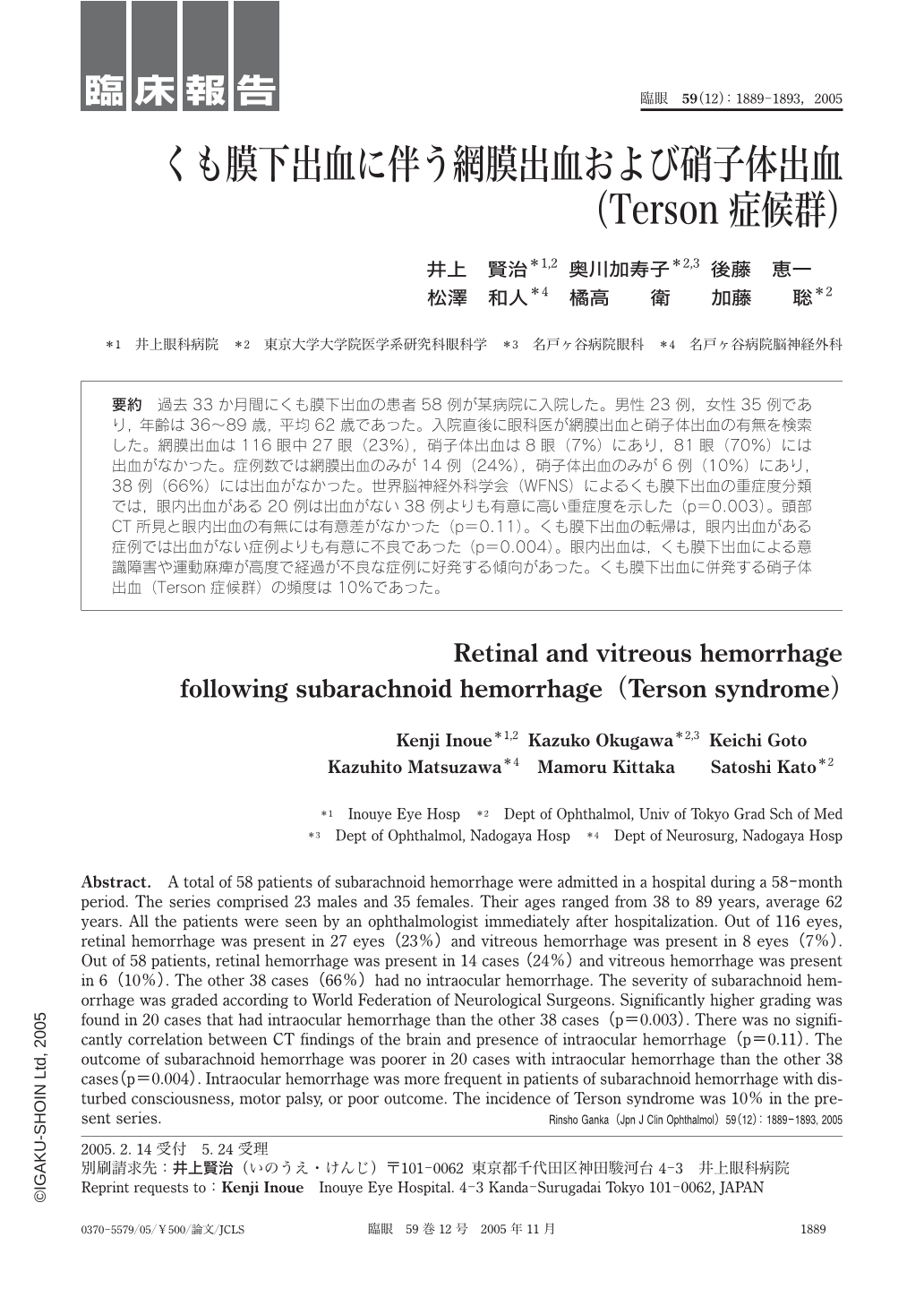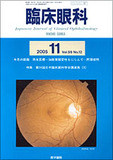Japanese
English
- 有料閲覧
- Abstract 文献概要
- 1ページ目 Look Inside
過去33か月間にくも膜下出血の患者58例が某病院に入院した。男性23例,女性35例であり,年齢は36~89歳,平均62歳であった。入院直後に眼科医が網膜出血と硝子体出血の有無を検索した。網膜出血は116眼中27眼(23%),硝子体出血は8眼(7%)にあり,81眼(70%)には出血がなかった。症例数では網膜出血のみが14例(24%),硝子体出血のみが6例(10%)にあり,38例(66%)には出血がなかった。世界脳神経外科学会(WFNS)によるくも膜下出血の重症度分類では,眼内出血がある20例は出血がない38例よりも有意に高い重症度を示した(p=0.003)。頭部CT所見と眼内出血の有無には有意差がなかった(p=0.11)。くも膜下出血の転帰は,眼内出血がある症例では出血がない症例よりも有意に不良であった(p=0.004)。眼内出血は,くも膜下出血による意識障害や運動麻痺が高度で経過が不良な症例に好発する傾向があった。くも膜下出血に併発する硝子体出血(Terson症候群)の頻度は10%であった。
A total of 58 patients of subarachnoid hemorrhage were admitted in a hospital during a 58-month period. The series comprised 23 males and 35 females. Their ages ranged from 38 to 89 years,average 62 years. All the patients were seen by an ophthalmologist immediately after hospitalization. Out of 116 eyes,retinal hemorrhage was present in 27 eyes(23%)and vitreous hemorrhage was present in 8 eyes(7%). Out of 58 patients,retinal hemorrhage was present in 14 cases(24%)and vitreous hemorrhage was present in 6(10%). The other 38 cases(66%)had no intraocular hemorrhage. The severity of subarachnoid hemorrhage was graded according to World Federation of Neurological Surgeons. Significantly higher grading was found in 20 cases that had intraocular hemorrhage than the other 38 cases(p=0.003). There was no significantly correlation between CT findings of the brain and presence of intraocular hemorrhage(p=0.11). The outcome of subarachnoid hemorrhage was poorer in 20 cases with intraocular hemorrhage than the other 38 cases(p=0.004). Intraocular hemorrhage was more frequent in patients of subarachnoid hemorrhage with disturbed consciousness,motor palsy,or poor outcome. The incidence of Terson syndrome was 10% in the present series.

Copyright © 2005, Igaku-Shoin Ltd. All rights reserved.


